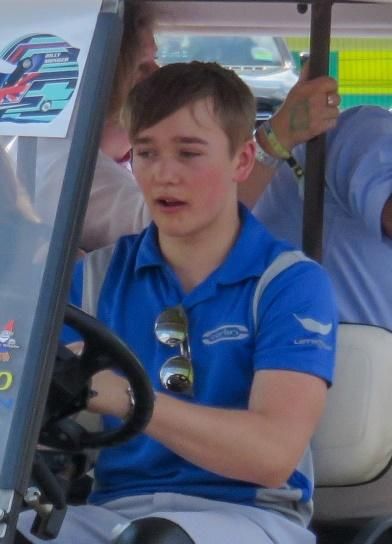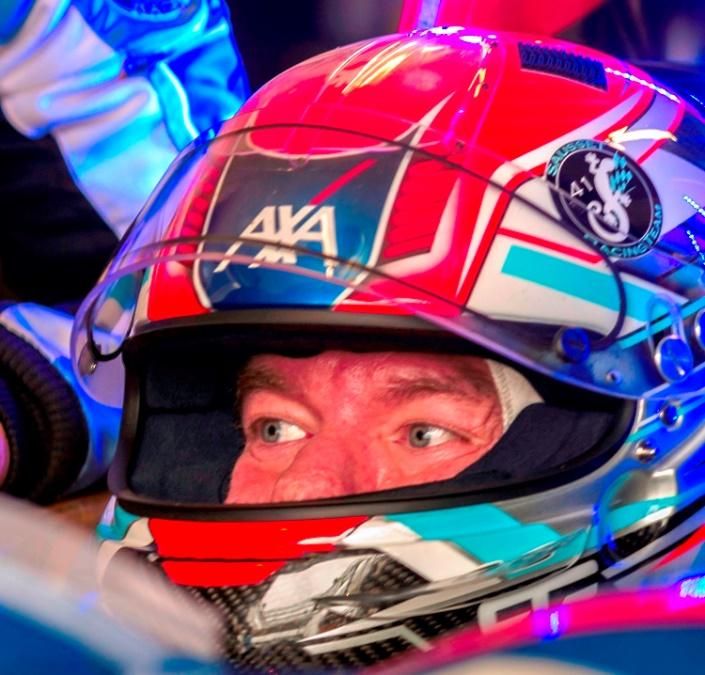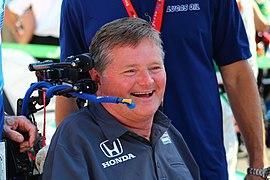
Disabled Race Car Drivers – Driven to Succeed
Nicholas Hamilton driving the Cupra León at Brands Hatch by BrokenGearbox / CC BY 4.0
Just because people have disabilities doesn’t mean they don’t dream. For many people, dreams of becoming doctors, lawyers, teachers, and other professionals are easily within reach. And for many people with disabilities, this type of dream has come true. Modern legislation, educational practice, and even technologies have made it easy for people with disabilities to reach high levels of achievement.
However, most “success stories” of this type involve educational goals or career goals that involve working in traditional office settings. One area that has been persistently difficult to navigate is professional sports. When you consider that many rules in competitive sports were made in order to ensure fair competition, this is unsurprising. After all, some things that people with disabilities use to play sports could represent an unfair advantage against people who don’t use them. For this reason, the sports world has developed alternative leagues and competitions, such as the Paralympics, for this subset of athletes.
One of the exceptions to this rule is automotive racing. With racing, the main concern is learning to control a fast-moving vehicle safely. Recent technological developments, such as car modifications that let drivers control the vehicle with their hands or eyes, have made racing possible for those with mobility impairments. And, because the user’s physical strength is irrelevant in every other way, everyone can compete fairly in the same competitions.
In this article, we’ll look at some motorsports racers who have succeeded despite difficulties moving their arms, legs, or both. These drivers represent a variety of medical conditions, ages, and preferred types of vehicles. Then, we’ll briefly look at some opportunities for veterans and people with disabilities to learn this exciting sport.
The Drivers
One of the great things about most motorsports is their low emphasis on physical condition. Some of these drivers developed their disability as youth or adults, and at least one was born with it. No matter what “caused” their disability, though, their love of cars and the independence that goes with it often “drives” them.
Thierry Genetier
Porsche driver and Frenchman Thierry Genetier have always loved cars and racing. As a youth, he was always looking at cars and hoping to drive fast ones someday. Then, he started racing rally cars at age 18, switching to motorbikes a few years later. Unfortunately, his motorbike racing career ended in 2002, when Genetier had a serious motorbike accident that paralyzed him from the waist down.
Not to be deterred from returning to the racetrack, Genetier worked hard and relearned to drive using hand controls. Over time, he regained his driver’s license and then earned a racing license from the FIA that lets him race modified cars. Now, he is famous in the sportscar circuit driving a Porsche 911-T3.
Nicolas Hamilton
British touring car racer Nicolas Hamilton is a great example of what you can do if you’re determined enough. Hamilton was born with cerebral palsy, and doctors predicted that he’d never walk. As a child, Hamilton was confined to a wheelchair, but with hard work and plenty of determination, he first walked unaided at age 17.
Once his parents saw Hamilton’s determination and love of cars, they let him learn to race. He fell in love with touring car racing, and in 2015, Nicolas became the first driver with a disability to compete in the British Touring Car Championship (BTCC). Later, in 2020, he achieved points finish.

Charlie Ray Howell
Sometimes kids have racing in their blood from the very beginning, and Charlie was no exception: he started racing to go-karts at age seven. However, Charlie had a secret: Osteopenia Imperfecta (OI), also known as “brittle bone disease.” Because of this medical condition, Charlie’s bones are brittle and break easily. This medical condition, combined with an accident, left him unable to use his legs as an adult.
Unwilling to give up his love of racing, Charlie did what other drivers on this list did: modified his car, relearned how to drive, and resumed racing. Now, he not only wins races but helps people with disabilities and medical issues learn how to race as well.
Michael Johnson
For Michael Johnson, the need to race started as an adolescent with motorbike racing, the most powerful vehicle he could drive under age 17. However, this racing episode didn’t last long. During a race, Michael was involved in an accident that injured his back and caused him to become paralyzed from the chest down.
But that didn’t stop Michael. He soon learned to drive a go-kart with adaptive equipment that let him control the vehicle entirely with his hands. Then, he progressed to driving a road car and, later, a Formula/Indy car. At the time, he was the only Indy car driver with paralysis. Nowadays, Mike competes in the Continental Tire circuit driving a Hyundai sportscar.
Perhaps most inspiring about Mike, though, is the way he talks about his disability. He doesn’t like being known as the disabled racecar driver, so much as the guy who overcame long odds to become a champion. In addition, his website talks about his experimental treatment to try and walk again. So far, he has recovered a lot of movement, but there’s still a long way to go. His overall message: don’t get discouraged.

Robert Kubica
More than anything, Robert Kubica’s story is one of comeback. He began a distinguished career in the year 2000, after winning many titles as a teenage go-kart racer. After becoming the first Polish F1 racer to win a title, Robert had a serious accident in 2011 during a race. His car crashed into the barriers, which cut into the cockpit. His arm was nearly severed, and Robert broke several bones. Doctors thought he’d never race again.
Not to be deterred, Robert undertook extensive rehabilitation efforts. Starting in 2013, he returned to racing in rally cars rather than F1, because he wasn’t ready for F1 yet. He also worked as a tester for new racecar models. Finally, in 2017, Robert returned to F1 racing. He is working his way up to the top of the charts.

Caleb McDuff
Caleb is a child go-kart racer from the UK. He’s also profoundly deaf. Because he uses cochlear implants, which don’t fit under crash helmets, he races in complete silence. Rather than using the sound of his kart to help drive, he relies on the feel of the road underneath it. As a result of this hard work, Caleb has won several championships. He isn’t one to let sensory deficits stop him. Rather, he follows his dreams.
Nathalie McGloin
Nathalie is on her way to becoming a legend. As a teenager, Nathalie was a passenger in a car when she was in an accident. The accident caused a severe spinal cord injury, and three of her limbs are paralyzed. At this point in her life, she didn’t even have a driver’s license, but she was determined to learn how to drive. Then, in college, she bought a sportscar and fell in love with these powerful vehicles. Soon, she was racing in modified sportscars. Now, she is proud to race not only as a woman but as a woman with a disability.
According to Nathalie, motorsports are some of the most disability-friendly events. If someone can learn how to race with modified cars, there’s no fear that they have an advantage over anyone else. In addition, though racecar drivers might be seen in their wheelchairs, they don’t look any different when driving down the track.
As part of racing’s overall commitment to supporting disabled drivers, the FIA has a Disability and Accessibility Commission. This committee not only ensures that people with disabilities can compete safely, but also seeks to improve conditions at the track for them. Nathalie is the chair of this commission, and she works to raise the profile of disabled racers worldwide. At the same time, she continues to race in a Lamborghini sports car.
Billy Monger
Also known as “Billy Whiz,” Billy is a British Formula racer. In 2017, he was in a serious accident that cost him both of his legs. By 2018, he had regained his British racing license, using a modified car. The year before, the FIA decided to allow Formula racing with appropriately modified Formula cars. Billy was arguably the first racer to do this, re-entering racing in 2018. By 2021, he had proven that people like him can achieve formula glory without legs.


Frédéric Sausset
In 2012, Frederic Sausset was a successful businessman. On vacation that year, he acquired a serious infection that put him in a medically induced coma for a while. When he woke up, he’d lost both arms and legs to amputation, in a bid to save his life. Frederic decided it was time to do something else with his life.
After much thought, Sausset decided it was time to start racing. His goal? Race at Le Mans, a major French sports car competition. He made some changes to his sports car and hit the track. Now, he races with special controls that connect to his prosthetics for the pedals and prosthetic-friendly hand controls. A near-death experience radically changed the course of his career.
Sam Schmidt
Sam Schmidt was an Indy car driver back in the Nineties. In the year 2000, Sam had a serious accident that paralyzed him from the neck down. Since adaptive racing technology hadn’t been developed yet, Sam assumed he’d never race again. Instead, he has become a team owner and coach through Sam Schmidt Motorsports. The team has won several championships.

Team Brit
In closing, let’s look at Team Brit, the first team made up of all disabled drivers. They operate in the GT and kart racing spaces. At Team Brit, the idea is to give racers with disabilities a sponsorship, and they hope to eventually make it to Le Mans. In addition, they help would-be racers modify their cars so they can enjoy motorsports. In fact, they have a plug and play modification system that lets drivers return their car to standard specifications, and then share it with another driver.
Accessible NASCAR Racing for People with Disabilities and Veterans
Here in the United States, many people with disabilities want to experience driving a racecar, even if it’s just once. Likewise, veterans return from deployment with serious injuries, or even with psychological issues that make it hard to cope with life. For many of them, getting to drive can be a major boost to them psychologically. And for a few, it might even become a job.
There are several organizations that help people have this experience, such as Accessible Racing. Each of these companies put someone in the driver’s seat of a modified racecar, along with an instructor. This allows them to channel their inner Charlie Howell or Nathalie McGloin.
If you already have a racecar and have experienced a life-altering disability, there are companies that will alter your car so you can race again. Not only can you get racing mods, but you can also get adaptive modifications for everyday driving.
Wrapping Up
No matter what kind of disability someone has, there’s no reason to say “I can’t” when it comes to motorsports. As these drivers, and even teams, demonstrate, with the right modifications and enough determination, almost anyone can race. In addition, racing is one of the most disability-friendly sports out there, with disabled drivers in all car types. If you think you’d enjoy racing, there’s no reason not to try it.
Related Links
Accessible racing providers (US): https://www.disabled-world.com/sports/accessible-racing.php
American racing modification company: http://www.mme-motorsport.com/en/products/hand-controls
Team BRIT: https://teambrit.co.uk/hand-control-technology/
FIA disability and accessibility: https://www.fia.com/disability-accessibility
NASCAR Foundation: https://www.nascarfoundation.org/
In Post Image Credit Nicholas Hamilton - Wikipedia
In Post Image Credit Robert Kubica – Wikimedia Commons
In Post Image Credit Caleb McDuff - Wikipedia
In Post Image Credit Billy Monger - Wikipedia
In Post Image Credit Frédéric Sausset – Wikimedia Commons
In Post Image credit Sam Schmidt – Wikimedia Commons
Updated